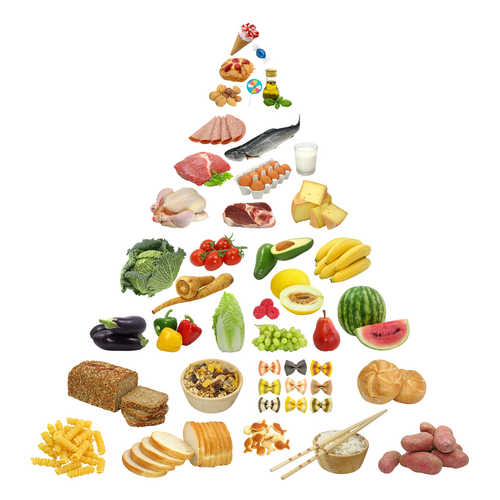The first thing to understand about Vitamin D is that it is not a vitamin. By definition, a vitamin is a substance that is essential to human health but cannot be produced by the body. Vitamin D, in its most obvious and fundamental function, is essential to the metabolism of calcium and phosphorous in the body and without Vitamin D, we would not have healthy bones. So it is essential to our bodies, but Vitamin D is produced by our bodies when we are exposed to UVB rays of the sun. Because Vitamin D is produced by the body, it does not meet both of these above criteria. Vitamin D is not truly a vitamin.
Vitamin D was named a vitamin in 1920 when a researcher raised dogs without any exposure to sunlight. He fed fish liver oil to dogs and prevented rickets. The researcher assumed that the substance responsible for preventing rickets was in the fish liver oil—and not producible by the body. He named this essential nutrient a vitamin. It was four years later when other researchers found that Vitamin D was produced in the body when exposed to sunlight. So to call Vitamin D a vitamin is a misnomer but for the benefit of public health and nutrition, as well as its name’s long tradition, Vitamin D is still officially called a “vitamin.”

How Do we Get our Vitamin D?
Step One—Sun hits your skin It all begins when the skin is exposed to the sun. The UVB light in the sun interfaces with a form of cholesterol in your skin called 7-dehydrocholesterol, and this substance is synthesized into pre-vitamin D3. The pre-vitamin D3 immediately converts into Vitamin D3. This is the Vitamin D that circulates through the body, but it still isn’t empowered into its activated form.
Vitamin D3 is made in large quantities when you are in the sun during peak UV times. In fact it is estimated that 30 minutes in the sun in a bathing suit, midday in summer can make up to 20,000 IU of Vitamin D. If you get too much sun, the skin is able to convert the excess Vitamin D to other inactive molecules. In this way the body does not get overdosed with Vitamin D from sun exposure.
For my patients who don’t get enough sun, I advise them to take Vitamin D as a supplement, in carefully selected dosages.
Step Two—Vitamin D3 becomes 25D The Vitamin D3, either from sun or supplement makes its way to the liver where it undergoes a process (hydroxylation) turning it into 25D to store in your body. Having optimal stores of 25D in your body is very important, as these stores will enhance your body’s ability to make the best use of Vitamin D’s capabilities. If your body does not store enough Vitamin D in the form of 25D, then you will have low or deficient levels of Vitamin D in the blood. Ideally your Vitamin D levels should be optimal.
Step Three—25D becomes 1,25D3 The first priority for the health of your body is to send 25D from your liver to the kidneys where it is transformed into 1,25D3. 1,25D3 is the active and potent form of Vitamin D. As 1,25D3 this form of Vitamin D has the job of circulating in your blood to ensure that you maintain appropriate levels of calcium. This function of 1,25D3 is vital to our health—so much so that scientists didn’t expect it to have other functions.
In 1970, Vitamin D researcher Michael Holick and his colleagues discovered that the kidneys were not the only place in the body where 25D was metabolized into the potent and vital substance 1,25D3. When your body has enough stores of 25D, and has maintained the proper functioning of calcium levels in the blood, something exciting happens to the “excess” 25D.
It is only in the last ten years that scientists have come to understand this newfound function of the 25D form of Vitamin D. They have discovered that most tissues and cells of the body have the ability to metabolize 25D from the liver and turn it into 1,25D3. When researchers discovered these extra steps in the metabolizing of Vitamin D, they realized that many organs, tissues, and cells in the body have receptors for Vitamin D.
This means that Vitamin D circulates throughout the body and has the ability to land, and affect the cells, tissues, and organs that receive the Vitamin D. It is the only substance of its kind in the body and researchers are finding that Vitamin D has many repair and maintenance functions in most tissues and cells. Vitamin D isn’t just about healthy bones anymore.
It is this new fact about the 1,25D3 form of Vitamin D that has researchers so excited. According to Dr. John Cannell, director of the Vitamin D Council, 1,25D3 affects more than 200 genes in the body and can be found in most tissues in the body. He states on his Website, “This explains why the same substance may have a role in preventing cancer, influenza, autism, asthma, multiple sclerosis, and cardiovascular disease, not just curing rickets and osteomalacia.”

Vitamin D From Food
Some health experts and nutritionists insist that we can get access to sufficient supplies of Vitamin D from eating food rich in Vitamin D.
A plethora of press releases have alerted the world about the health implications of Vitamin D deficiency. Reporters are interpreting the findings, and interviewing doctors, nutritionists and health professionals for their opinions regarding the veracity of the scientific findings. Laypersons are voicing their opinions through their blogs and comments on Websites. While it is interesting to read people’s varying voices of reason, it only creates confusion for the average person who is looking for solid information upon which to base their health decisions
There is much conflicting information about the presence of Vitamin D in food. Some avid proponents of healthy eating cling to the belief that all of our nutrition can come from eating a balanced and healthy diet. While this ideal is admirable, there are a few considerations about diet that remain a fact for most North Americans.
You can’t eat enough fish, eggs or mushrooms to get adequate—let alone optimal Vitamin D
-
If ‘food experts’ don’t know that the Vitamin D content in food is inadequate to reap health benefits, how can the average person be expected to know about the Vitamin D content in food?
-
Most people do not eat healthy balanced diets and will never achieve adequate Vitamin D levels from diet alone.
-
There simply are not enough foods that naturally contain enough Vitamin D to raise your blood levels of Vitamin D to an optimal level.
-
Foods fortified with Vitamin D do not contain uniform amounts of the substance and may not contain the amount of Vitamin D reported on the packaging.

About Dr. Soram Khalsa
As an MD, Dr Soram specializes in Integrative Medicine combining diet, nutrition, acupuncture, herbs and nutrition. Visit Dr Soram’s Healthy Living Store where you’ll find high-quality nutritional supplements:





